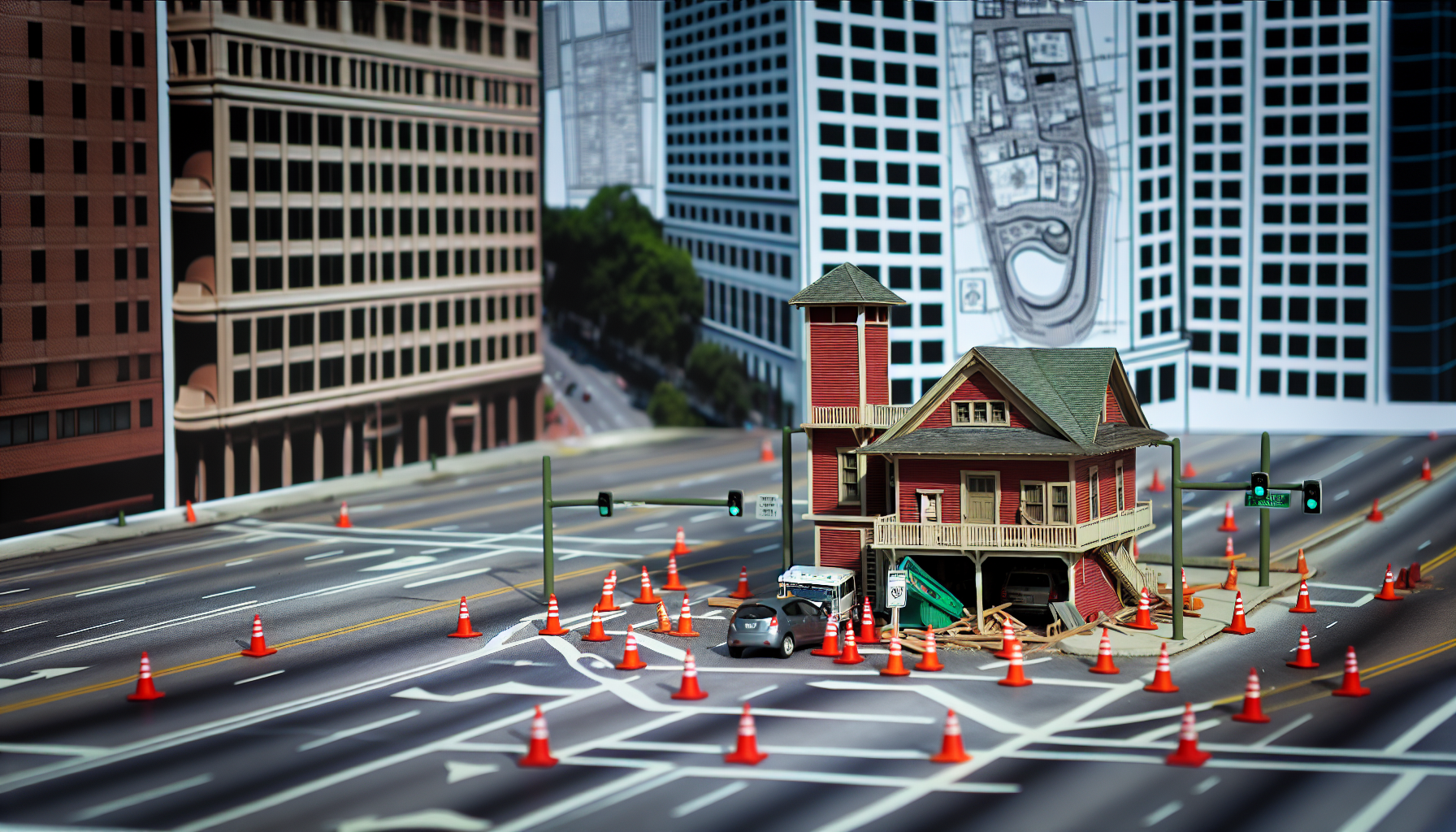Urban planning is crucial for the orderly development of cities and communities. However, sometimes, decisions defy logic, resulting in bizarre outcomes. This article delves into a perplexing example of urban design gone awry: a firehouse built in the middle of a road. We explore the impacts, reactions, and lessons learned from such a misstep in planning.
The Folly of Poor Urban Design Choices
Starting from the premise that urban planning significantly shapes the vibrancy, safety, and functionality of our cities, it is startling to come across instances where this vital process goes amusingly awry. One such peculiar example springs to mind—a firehouse built right in the middle of a road, creating a scenario that seems lifted from a comedic sketch rather than a thoughtful urban planning board. This chapter delves deep into the vortex of this urban oddity, contrasting effective urban design principles with this glaring misstep while analyzing the socio-economic and public safety implications it engenders.
Urban planning, in its essence, aspires to enhance the quality of life in urban areas by meticulously organizing land use, infrastructure, and public services. The founding fathers of urban planning, from the likes of Ebenezer Howard to Le Corbusier, emphasized the importance of careful city designing to prevent congestion, ensure public safety, and promote harmonious community living. In light of this, the decision to erect a firehouse in the middle of a road appears not just ill-conceived but a flagrant disregard for the foundational tenets of urban design. It disrupts traffic flow, complicates emergency responses, and poses a significant risk to both the firefighters stationed there and the general public.
Reflecting upon the socio-economic implications, this anomaly disrupts the urban fabric. It becomes a bottleneck, creating traffic congestion and lengthening response times for emergency vehicles, paradoxically, including those housed within the firehouse itself. The irony is as bitter as it is apparent: a facility meant to serve as a bastion of public safety becomes a hindrance. The local community, initially bemused by the peculiar placement, soon voices concerns as the practical repercussions unfold—increased travel times, heightened pollution from idling cars, and the pervasive sense of a missed opportunity to utilize the space more effectively for public amenities or green spaces.
From a public safety perspective, the implications are dire. Emergency response times are the golden standard by which the efficiency of a fire service is often judged. Placing a firehouse in the midst of a thoroughfare inevitably leads to delays—each minute lost could translate into escalated emergencies, from controllable fires morphing into infernos to delayed medical interventions in critical situations. This aberration in urban design starkly contrasts with the principles upheld by the National Fire Protection Association, which advocates for the strategic placement of fire stations to optimize coverage and minimize response times.
The reaction from firefighting professionals ranges from incredulity to frustration. Trained to tackle life-and-death scenarios with precision and rapidity, these individuals find themselves ensnared in logistical limbo, their expertise curtailed by the very infrastructure meant to support them. The community’s sentiment mirrors this dismay, morphing from initial curiosity to a vocal demand for remedial action. This case underscores the importance of integrating the perspectives of all stakeholders—urban planners, public safety officials, and the community—in the urban design process to preclude such oversights.
In drawing lessons from this urban anomaly, it is instructive to juxtapose it against other incidents where lapses in urban planning and design led to catastrophic outcomes. The Station nightclub fire serves as a sobering reminder of what is at stake. Faulty planning, coupled with inadequate safety measures, resulted in a tragedy that claimed 100 lives. While the circumstances differ, the common thread of oversight leading to disaster is palpable, underscoring the necessity of diligent, comprehensive urban and emergency planning.
Expanding the lens to encompass case studies across diverse geographies reveals a pattern of potential pitfalls in urban design. Instances abound where the omission of rigorous safety considerations in the planning phase has led to infrastructural failures, be it poorly designed bridges, buildings, or public spaces that compromise rather than protect public safety. These serve as cautionary tales, emphasizing the need for an integrated approach that situates public safety at the core of urban planning initiatives.
Drawing upon expert opinions and recommendations from organizations such as the National Fire Protection Association, several preventive measures and best practices emerge. These include the critical evaluation of proposed urban projects through a public safety lens, the rigorous application of safety standards and guidelines in both construction and urban design, and the cultivation of a collaborative planning process that prioritizes community well-being and safety.
Moreover, these insights highlight the importance of conducting comprehensive impact assessments prior to the implementation of urban projects. Such assessments, encompassing traffic impact studies, environmental considerations, and public safety evaluations, serve as a bulwark against the kind of oversight exemplified by the firehouse in the road scenario. Ensuring the seamless integration of emergency services within the urban fabric requires a commitment to these practices, with a vigilant eye towards evolving safety standards and community needs.
In this light, the curious case of a firehouse built in the middle of a road transcends its initial absurdity to emerge as a poignant reminder of the stakes involved in urban planning. It encapsulates the multifaceted implications of poor design choices—not just as a fascination but as a clarion call for a reinvigorated focus on the fundamentals of urban design. It underscores the necessity of harmonizing aesthetic, functional, and safety considerations to foster urban environments that are not only livable but resilient and safe for all members of the community.
Invariably, the journey toward ideal urban spaces is fraught with challenges and missteps. However, by embracing a holistic approach to urban planning that incorporates rigorous safety evaluations, stakeholder engagement, and adherence to best practices, cities can avoid the pitfalls illuminated by this curious oddity. In doing so, they move closer to realizing urban environments that genuinely reflect the aspirations of their inhabitants—spaces that champion safety, efficiency, and the collective well-being, thereby turning lessons learned from past blunders into cornerstones for future urban development endeavors.
Conclusions
Throughout history, urban design has evolved to prioritize public welfare and safety. The absurdity of a firehouse located in the middle of a road serves as a stark reminder of the consequences of inadequate planning. It underlines the need for thorough analysis, public consultation, and adherence to safety standards in urban development. This anecdote will stand as a cautionary tale inspiring greater foresight and responsibility in future urban projects.










